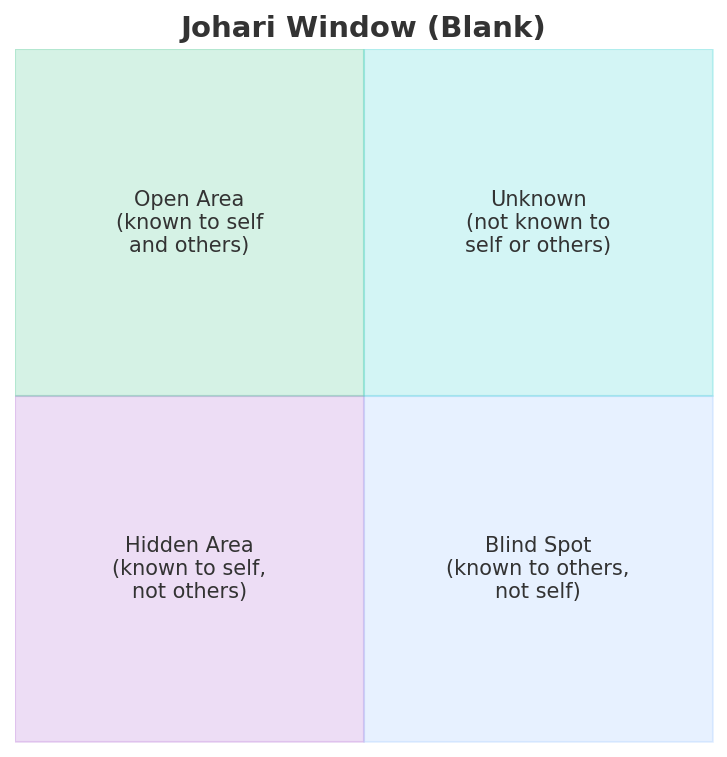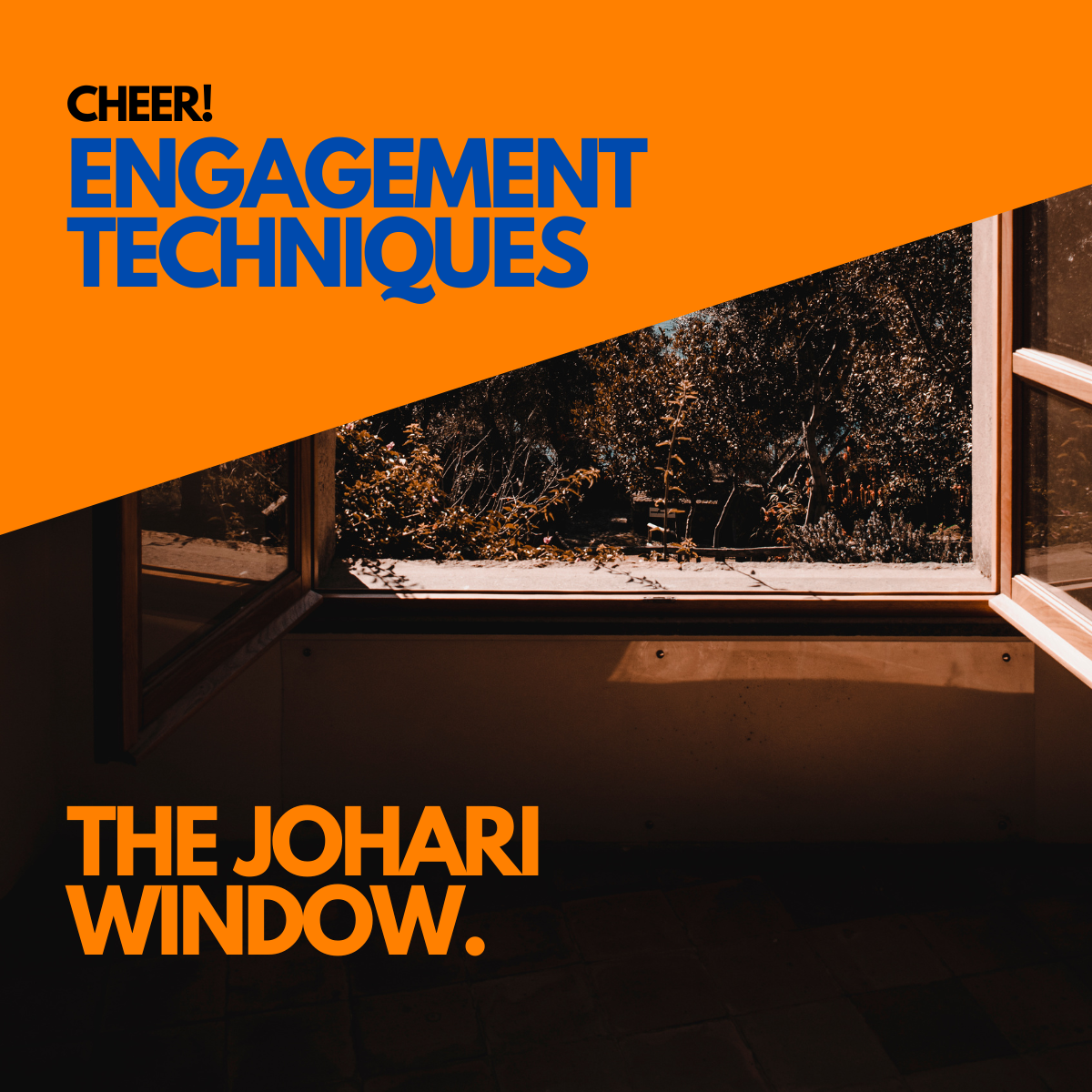Engagement Technique:
The Johari Window
The Johari Window is one of those deceptively simple tools that can make a big difference to teamwork, trust, and self-awareness. Developed in the 1950s by psychologists Joseph Luft and Harrington Ingham (hence Jo + Hari), it’s still one of the best exercises for helping people understand themselves and each other.
Warning: If you haven’t done any employee engagement techniques, start with another from this list – as this one requires a degree of trust, and I would say is ‘more advanced’.
The Model
The Johari Window is split into four quadrants:
-
Open Area: “What I know about myself and others know about me.”
-
Blind Spot: “What others know about me, but I don’t realise.”
-
Hidden Area: “What I know about myself, but others don’t.”
-
Unknown Area: “What no one knows (yet).”
The idea of the exercise is to reduce the Blind Spots!

How to run it
- Gather a team where there is TRUST. Typically where the team know each other and are used to working together.
- Each person answer ‘what I know about myself that others do’, and ‘others don’t’. This part is quite cathartic, but it can be quite difficult for people to do. You’re asking people to share things they believe people don’t know about them. Hence why the TRUST part is so important. Ask they try to be as open as possible, and as moderator ensure there’s a safe space.
- When they reveal, the other people listen, and then share things they know about this individual that isn’t on there. The idea for the person listening is to learn things they didn’t know about themselves, that people PERCEIVE. Perception is the key word, it doesn’t mean these things are true, but what people see in this person. Which again, can be hard to hear, but helpful to understand more about their perception to people close to them. The listener should not challenge, but is welcome to question if they don’t understand any of the points raised.
- The person then can look at what was known, what wasn’t, and move the words/answers across the grid
- If a suitable group size, this can be repeated around the room.
Why it works
-
The idea is the open Area grows as people share more and give feedback.
-
Blind Spots shrink when people learn how others see them.
-
Hidden Areas reduce when people are more open about themselves.
-
Teams build trust and improve communication through honesty.
REMINDER:
This only works if there’s trust. If people are worried feedback will be used against them, they’ll clam up. Make it safe, positive, and voluntary. I have done a few of these as a participant and moderator, they are uncomfortable, particularly the first session. You should not ‘enforce’ this exercise, but make it a recommendation. Usually after a first round of it within a company word spreads about the positive exercise this can be, and people tend to be more interested.
The Johari Window is a brilliant employee engagement exercise because it helps people see themselves as others see them — and that’s the first step towards stronger collaboration.
This post is part of our Engagement Techniques series of practical, low-cost ideas to bring more connection and meaning into work. Find the rest here
👉 Want to explore techniques like this in more depth? I run interactive employee engagement workshops where we bring these ideas to life.


